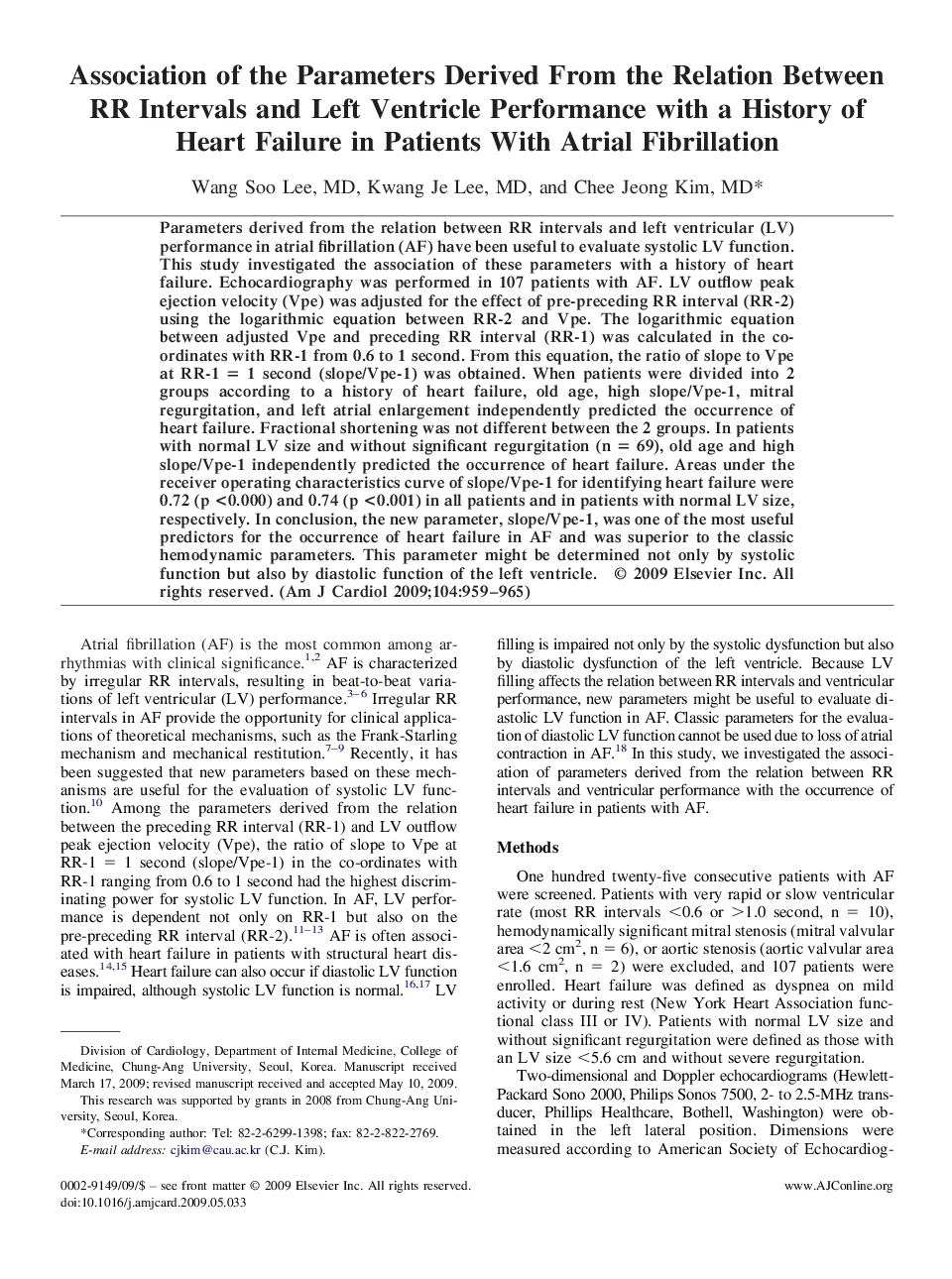| Article ID | Journal | Published Year | Pages | File Type |
|---|---|---|---|---|
| 2857505 | The American Journal of Cardiology | 2009 | 7 Pages |
Abstract
Parameters derived from the relation between RR intervals and left ventricular (LV) performance in atrial fibrillation (AF) have been useful to evaluate systolic LV function. This study investigated the association of these parameters with a history of heart failure. Echocardiography was performed in 107 patients with AF. LV outflow peak ejection velocity (Vpe) was adjusted for the effect of pre-preceding RR interval (RR-2) using the logarithmic equation between RR-2 and Vpe. The logarithmic equation between adjusted Vpe and preceding RR interval (RR-1) was calculated in the co-ordinates with RR-1 from 0.6 to 1 second. From this equation, the ratio of slope to Vpe at RR-1 = 1 second (slope/Vpe-1) was obtained. When patients were divided into 2 groups according to a history of heart failure, old age, high slope/Vpe-1, mitral regurgitation, and left atrial enlargement independently predicted the occurrence of heart failure. Fractional shortening was not different between the 2 groups. In patients with normal LV size and without significant regurgitation (n = 69), old age and high slope/Vpe-1 independently predicted the occurrence of heart failure. Areas under the receiver operating characteristics curve of slope/Vpe-1 for identifying heart failure were 0.72 (p <0.000) and 0.74 (p <0.001) in all patients and in patients with normal LV size, respectively. In conclusion, the new parameter, slope/Vpe-1, was one of the most useful predictors for the occurrence of heart failure in AF and was superior to the classic hemodynamic parameters. This parameter might be determined not only by systolic function but also by diastolic function of the left ventricle.
Related Topics
Health Sciences
Medicine and Dentistry
Cardiology and Cardiovascular Medicine
Authors
Wang Soo MD, Kwang Je MD, Chee Jeong MD,
